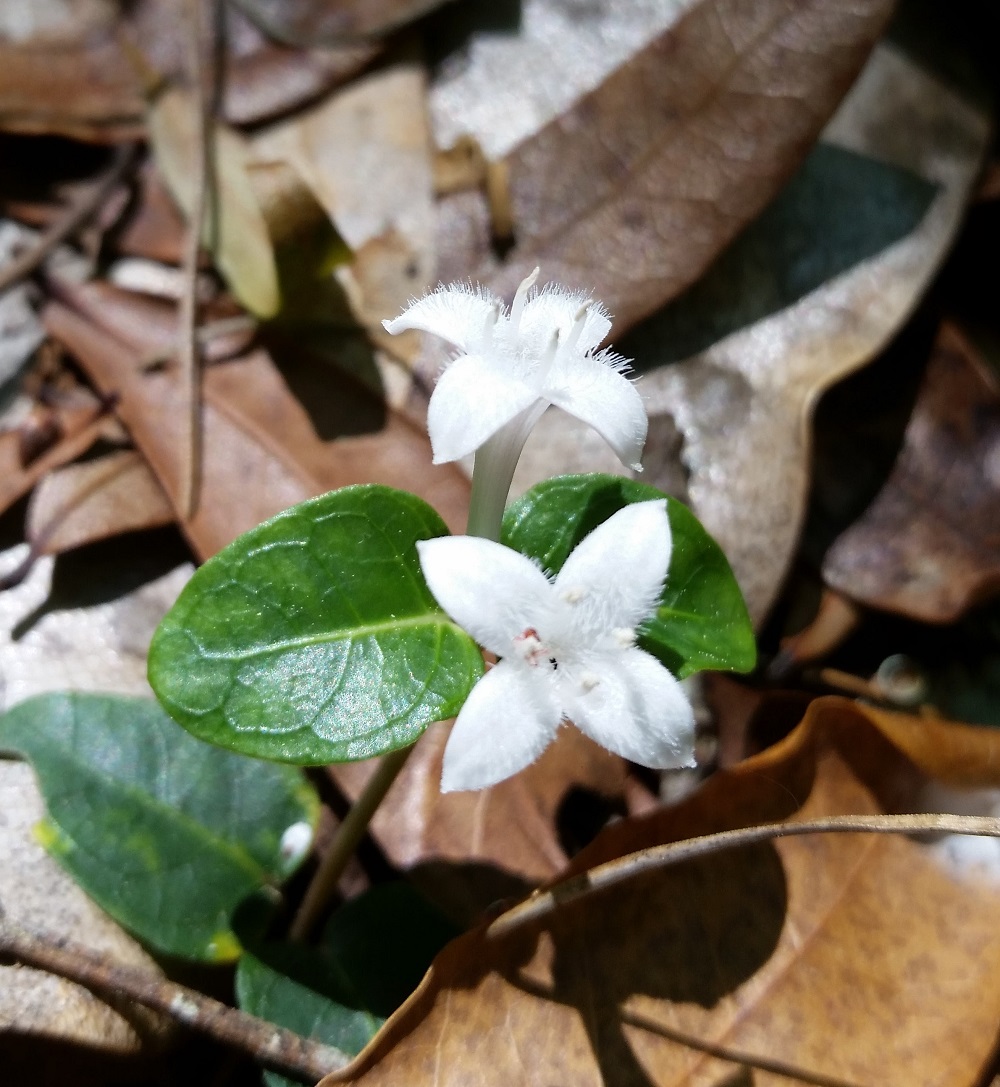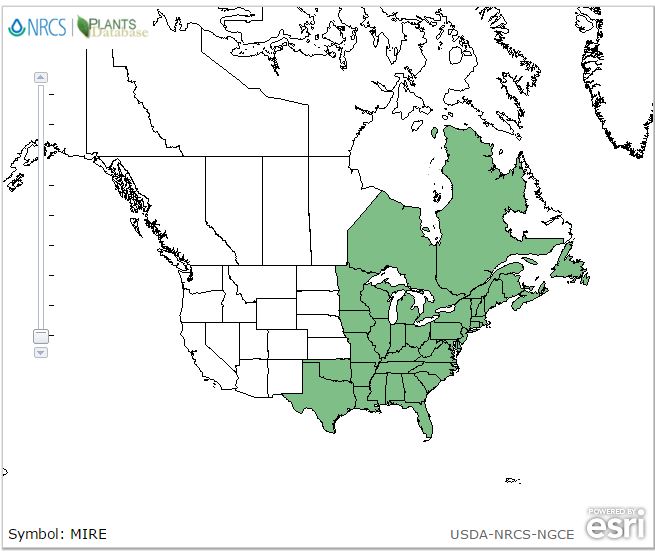Difference between revisions of "Mitchella repens"
Emmazeitler (talk | contribs) (→Taxonomic notes) |
Emmazeitler (talk | contribs) |
||
| Line 18: | Line 18: | ||
}} | }} | ||
| − | Common name: Partridge-berry | + | Common name: Partridge-berry<ref name="weakley">Weakley, A.S. 2015. Flora of the southern and mid-atlantic states. Working Draft of 21 May 2015. University of North Carolina at Chapel Hill, Chapel Hill, North Carolina.</ref> |
==Taxonomic notes== | ==Taxonomic notes== | ||
Synonyms: none.<ref name="weakley">Weakley, A.S. 2015. Flora of the southern and mid-atlantic states. Working Draft of 21 May 2015. University of North Carolina at Chapel Hill, Chapel Hill, North Carolina.</ref> | Synonyms: none.<ref name="weakley">Weakley, A.S. 2015. Flora of the southern and mid-atlantic states. Working Draft of 21 May 2015. University of North Carolina at Chapel Hill, Chapel Hill, North Carolina.</ref> | ||
| Line 27: | Line 27: | ||
<!-- Basic life history facts such as annual/perrenial, monoecious/dioecious, root morphology, seed type, etc. --> | <!-- Basic life history facts such as annual/perrenial, monoecious/dioecious, root morphology, seed type, etc. --> | ||
==Distribution== | ==Distribution== | ||
| + | ''M. repens'' ranges from Novia Scotia, west to Minnesota, and south to central peninsular Florida and Texas. There are disjunct populations in Guatemala.<ref name="weakley">Weakley, A.S. 2015. Flora of the southern and mid-atlantic states. Working Draft of 21 May 2015. University of North Carolina at Chapel Hill, Chapel Hill, North Carolina.</ref> | ||
==Ecology== | ==Ecology== | ||
| − | + | ===Habitat=== | |
| + | ''M. repens'' is found in deciduous and coniferous forests, streambanks, heath balds, maritime forests, rotten logs and hummocks, and in bottomlands or other wetland habitats. The plants in maritime forests are more robust than others and often have an ascending habit, the | ||
| + | stems sometimes 20-30 cm tall<ref name="weakley">Weakley, A.S. 2015. Flora of the southern and mid-atlantic states. Working Draft of 21 May 2015. University of North Carolina at Chapel Hill, Chapel Hill, North Carolina.</ref> <!--Natural communities, human-disturbed habitats, topography, hydrology, soils, light, fire regime requirements for removal of competition, etc.--> | ||
===Phenology=== <!--Timing off flowering, fruiting, seed dispersal, and environmental triggers. Cite PanFlora website if appropriate: http://www.gilnelson.com/PanFlora/ --> | ===Phenology=== <!--Timing off flowering, fruiting, seed dispersal, and environmental triggers. Cite PanFlora website if appropriate: http://www.gilnelson.com/PanFlora/ --> | ||
| − | ''M. repens'' | + | ''M. repens'' is an evergreen, but flowers from May through July and flowers from June through July.<ref name="weakley">Weakley, A.S. 2015. Flora of the southern and mid-atlantic states. Working Draft of 21 May 2015. University of North Carolina at Chapel Hill, Chapel Hill, North Carolina.</ref> |
<!--===Seed dispersal===--> | <!--===Seed dispersal===--> | ||
<!--===Seed bank and germination===--> | <!--===Seed bank and germination===--> | ||
Revision as of 16:54, 28 September 2020
| Mitchella repens | |
|---|---|

| |
| Photo by Katelin Pearson | |
| Scientific classification | |
| Kingdom: | Plantae |
| Division: | Magnoliophyta - Flowering plants |
| Class: | Magnoliopsida – Dicotyledons |
| Order: | Rubiales |
| Family: | Rubiaceae |
| Genus: | Mitchella |
| Species: | D. repens |
| Binomial name | |
| Mitchella repens L. | |

| |
| Natural range of Mitchella repens from USDA NRCS Plants Database. | |
Common name: Partridge-berry[1]
Contents
Taxonomic notes
Synonyms: none.[1]
Varieties: none.[1]
Description
Distribution
M. repens ranges from Novia Scotia, west to Minnesota, and south to central peninsular Florida and Texas. There are disjunct populations in Guatemala.[1]
Ecology
Habitat
M. repens is found in deciduous and coniferous forests, streambanks, heath balds, maritime forests, rotten logs and hummocks, and in bottomlands or other wetland habitats. The plants in maritime forests are more robust than others and often have an ascending habit, the stems sometimes 20-30 cm tall[1]
Phenology
M. repens is an evergreen, but flowers from May through July and flowers from June through July.[1]